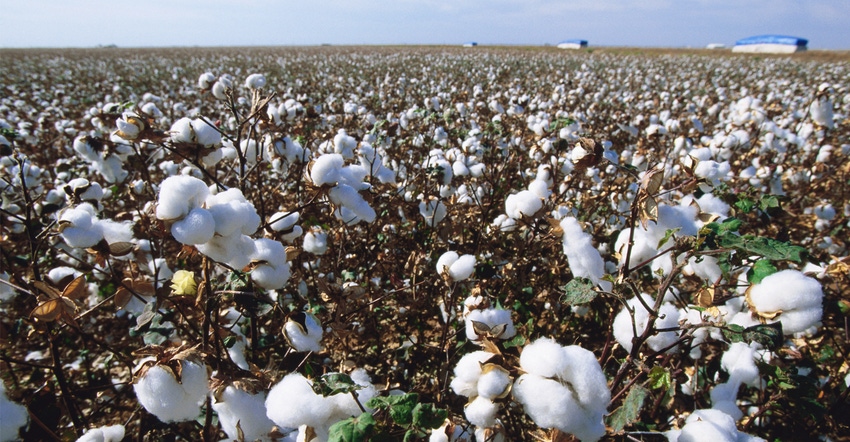December 9, 2021

Is there room for more cotton in Kansas … the Wheat State?
There certainly is, says Kansas State University water resources engineer Jonathan Aguilar, who is currently studying the best ways to grow a crop that is traditionally grown farther south. Kansas currently has a thriving cotton industry, with the state forecasted to harvest 101,000 acres in 2021. Cotton gins stretch across the southern counties of Kansas, and Plains Cotton Cooperative Association just cut the ribbon on its new $12.5 million cotton storage facility at Clearwater, Kan.
But how far north can cotton grow in the state?
Moving north
“One of the reasons we are looking at cotton is because it is drought-resistant, or at least doesn't need a lot of water compared to other crops grown in [southwest Kansas],” says Aguilar, who is based at K-State's Southwest Research and Extension Center in Garden City.
“The other reason we are doing research on growing cotton is because we are at the northern edge of cotton production in this region. We’ve been growing cotton for three years; our first question was whether it will grow here — and if it will, can it produce a decent yield?”
So far, he says, the answers are yes and yes.
“We are still getting samples for this year’s crop,” Aguilar says, “but it looks like we will have a nice yield.”
Water use
Much of K-State’s research is focused on irrigated cotton, as part of a rotation with other crops. Even though researchers are using available water, Aguilar says the crop requires less of it than other crops.
“Surprisingly, in our region — and I think our colleagues in Oklahoma say the same thing — if we put more water on cotton, it actually diminishes the yield compared to when you are putting just the right amount, or even limiting the amount of water that the crop receives.”
In other words, growing cotton in Kansas may require applying water at the proper time, rather than the actual volume applied.
“We are finding that if we put on water just at the critical stage of growth, it will outperform fully irrigated cotton,” Aguilar says.
More questions
Aguilar noted that K-State’s research will continue for two more years to fully understand the proper management to grow profitable cotton in the state. Compared to such states as Texas and Oklahoma, Kansas has fewer warm days, and the populations are not the same as are grown farther south.
“There’s an art and a science to cotton,” he says. “We are learning more about that. There are instances when we can apply water at the right time, when it will produce more, compared to not applying water in a strategic way.”
Source: Kansas State University Research and Extension is solely responsible for the information provided and is wholly owned by the source. Informa Business Media and all its subsidiaries are not responsible for any of the content contained in this information asset.
You May Also Like




